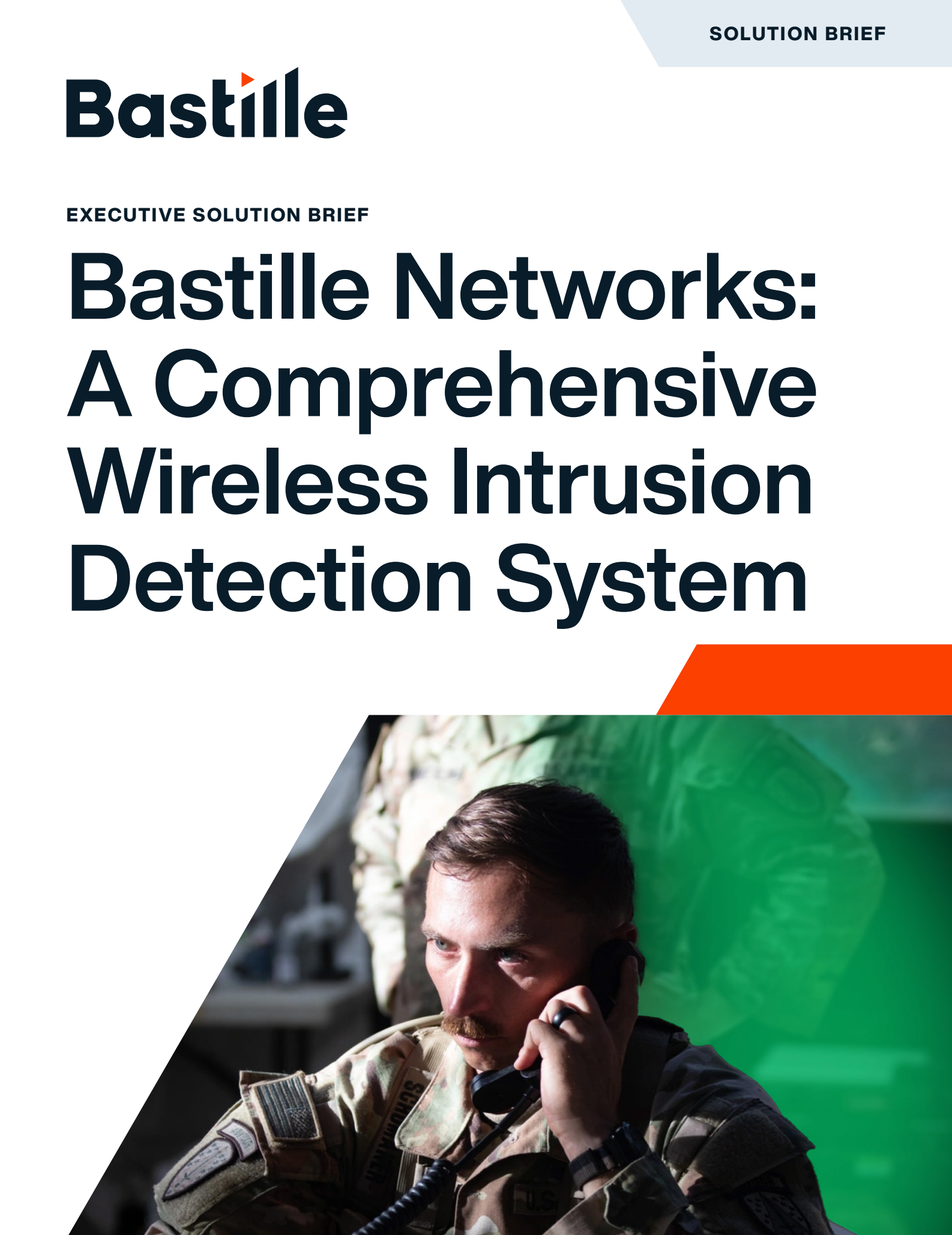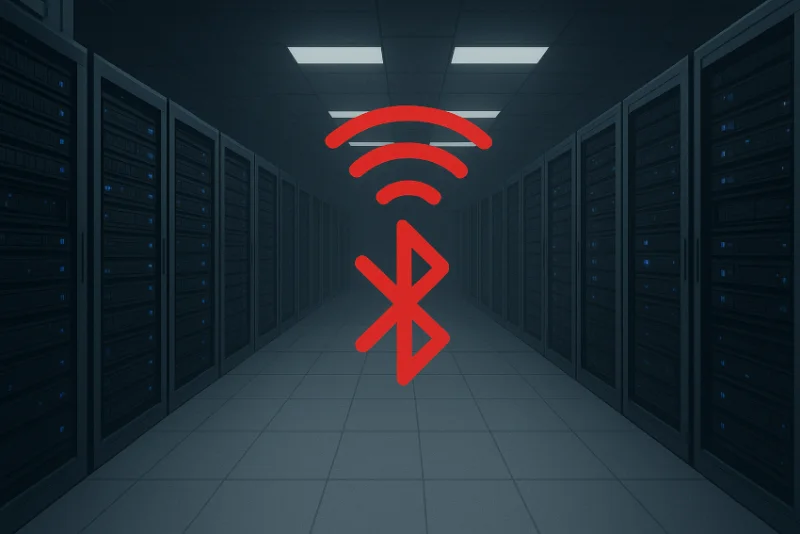
Pagers – History, Uses Today, and How to Detect
In a world of ever-faster mobile communications devices and cellular networks, it is easy to forget the role still played by much older wireless communication devices: pagers.
While smartphones dominate modern communication, pagers—once ubiquitous for short messages and alerts—are still widely used in critical environments. Detecting and monitoring pagers is vital to ensuring operational security. Bastille Networks provides a comprehensive solution for detecting wireless devices across the RF spectrum, including pagers.
Understanding the history and current usage of pagers is key to recognizing their significance and the potential security risks they pose.
A Brief History of Pagers
Pagers, or beepers, first emerged in the early 20th century as basic communication tools, eventually evolving into more advanced devices. The first iterations of what became known as a pager were first implemented by the Detroit Police Department in the 1920s. Their popularity peaked in the 1990s, with millions of users worldwide relying on them for critical communication. Despite being overshadowed by mobile phones, pagers continue to serve vital roles in certain sectors today, including health care and public safety.
Key Milestone in Pager Technology History:
- 1920’s-1950’s: The development of early pagers for hospitals and medical staff.
- 1959: The first commercial pager introduced my Motorola, revolutionized emergency communications by offering one-way communication to doctors and hospital staff. This is when the term pager came into usage.
- 1970’s-1980’s: Pagers gained widespread use in industries like law enforcement, corporate management, and emergency services due to their reliability.
- 1990’s: Pagers reached their peak with around 61 million users globally, but began to decline with the rise of mobile phones and cellular networks.
- 2000’s-present: While the global use of pagers has significantly decrease, they are still common in sectors requiring robust and reliable communication.
How Many Pagers are in Use Today?
While the overall use of pagers has dramatically declined, approximately two million pagers are still in active use globally. A few regions and industries, including government, healthcare and emergency services, continue to rely on pagers due to their unique benefits, including reliability in areas with poor cellular coverage and the ability to communicate during network outages.
Pagers in Use by Country:
- United States: The US healthcare industry remains the largest consumer of pagers, with an estimated 85% of hospitals still using them. Doctors, nurses, and emergency responders often rely on pagers to receive urgent communications, especially when cellular signals are unreliable or in situations requiring fast, secure alerts.
- Japan: Pagers remained popular in Japan for longer than in most other countries. Tokyo Telemessage, the last paging company in Japan, discontinued services in 2019, but before then, pagers were still used by businesses and young people for secure, quick communications.
- United Kingdom: Pagers are still used in healthcare and emergency services in the UK. The National Health Service (NHS) is one of the largest users of pagers. Despite efforts to phase out pagers, and transition to more modern communication tools many hospitals still depend on them.
- Germany & France: Both countries have reduced pager usage but continue to employ them in healthcare settings and other industries that require secure, encrypted messaging systems.
- Canada: In Canada, pagers are still in use within the healthcare system and by certain government agencies, although the numbers are significantly lower compared to the peak usage era.
Why are Pagers Still in Use?
Despite the rise of smartphones, pager offer several distinct advantages:
- Reliable Communication: Pagers are more reliable in environments with poor or no cellular reception, such as large buildings, hospitals, or rural areas.
- Network Independence: Pagers operate independently of congested cellular networks, making them a reliable tool in emergencies when cellular systems may be overloaded.
- Battery Life: Pagers can last several weeks on a single battery, making them ideal for long-term use in emergencies or power outages.
- Cost-Effective: Pagers are often more affordable than modern smartphones or communication systems, making them an economical option for many organizations.
- Security: Some pagers are equipped with encryption, making them secure for transmitting sensitive information, especially in healthcare or government sectors.
- Employees without cell phone coverage: One-way pagers allow professionals to receive messages while working in no to low cell phone coverage locations, such as rural areas.
Cellular Networks and Pager Technology
Pagers operate on dedicated paging networks, separate from mobile cellular networks like GSM or CDMA. These networks typically broadcast messages over VHF (Very High Frequency) or UHF (Ultra High Frequency) radio bands, allowing for long-range communication.
Types of Paging Networks:
- One-Way Paging: The most common type, where users receive messages but cannot respond. These systems use specific frequencies, such as 138–174 MHz (VHF) or 929–932 MHz (UHF).
- Two-Way Paging: In two-way systems, users can send responses, often using a combination of paging and cellular networks. These systems may use more advanced cellular technologies like GPRS (General Packet Radio Service) to send replies.
Bastille Networks: Detecting Pagers Across the RF Spectrum
Given the critical role pagers play in industries like healthcare, Bastille Networks provides advanced tools to monitor and detect pager signals.
How Bastille Detects and Locates Pager Signals:
- RF Spectrum Monitoring: Bastille’s technology scans frequencies from 100 MHz to 7.125 GHz.. This ensures comprehensive monitoring of pager transmissions, as well as other wireless devices.
- Localization: Bastille provides the location of radio-emitting devices such as pagers, allowing security teams to quickly respond to potential threats from unauthorized or suspicious devices.
- Real-Time Alerts: Bastille provides real-time notifications when devices are detected. This enables immediate action, such as investigating unauthorized devices or addressing security vulnerabilities.
Use Cases for Pager Detection
- Government & Defense: High-security environments use pagers for secure communications. Bastille detects unauthorized pager signals to prevent potential espionage or breaches.
- Industrial Control Systems: Pagers play a key role in industrial control environments. Bastille’s system ensures that only authorized pagers are operating, protecting operational integrity.
- Healthcare: Some hospitals still rely on pagers to send urgent communications to doctors, nurses, and emergency personnel. Emergency or hospital teams may have to enter buildings housing sensitive information without time for security checks. In this case, Bastille helps monitor pagers, providing information on where they are going inside the building.
Why Choose Bastille?
- Comprehensive RF Coverage: Bastille monitors frequencies from 100 MHz to 7.125 GHz, providing full visibility into pager transmissions across all major bands.
- Real-Time Detection: Bastille’s system detects radio frequency activity in real time, including the RF frequencies used by pagers, allowing security teams to respond to potential threats as they arise.
- Localization: Bastille’s capabilities allow for localization of pager signals, aiding in swift security intervention.
- Industry Expertise: Bastille’s products are designed for critical environments, offering specialized solutions for enterprise, government, and industrial sectors.
Conclusion
While pagers may seem like relics of the past, they remain essential in industries like healthcare, government, and emergency services. With an estimated two million pagers still in use worldwide, detecting and locating these devices is still important.
Bastille Networks offers a comprehensive solution to monitor pager activity, covering a broad spectrum of RF frequencies from 100 MHz to 7.125 GHz, and providing real-time alerts, signal characterization, and device localization.
Bastille’s pager detection capabilities mitigate the risks posed by unauthorized and often insecure wireless devices such as pagers. Whether in healthcare, government, or industrial sectors, Bastille’s solutions ensure that even legacy devices like pagers do not become a weak link in an organization’s security posture.
Further reading: Why pagers still matter: the history of pagers (1921-2021) – Spok Inc.
Sources
History of Pagers:
Current Use of Pagers:
Pagers in Specific Countries:
RF Spectrum and Pager Frequencies:




